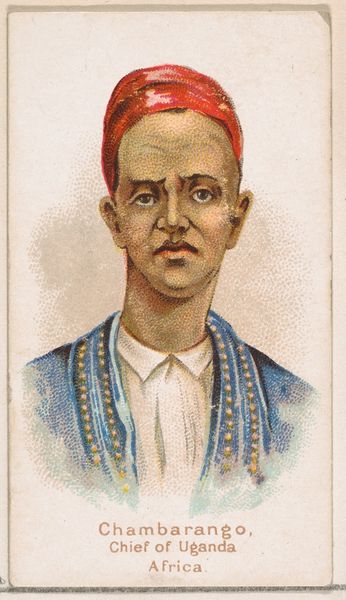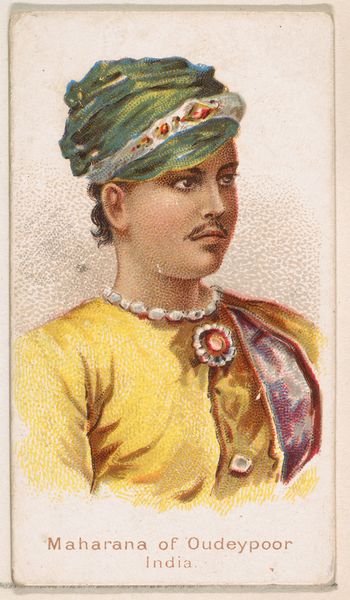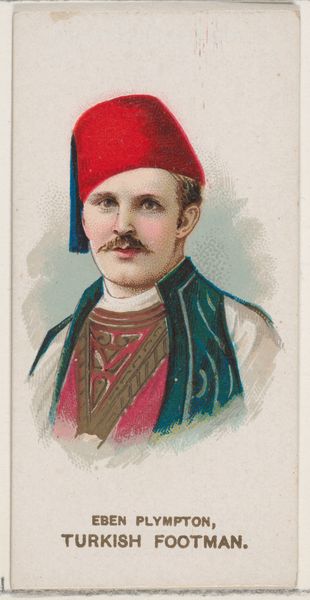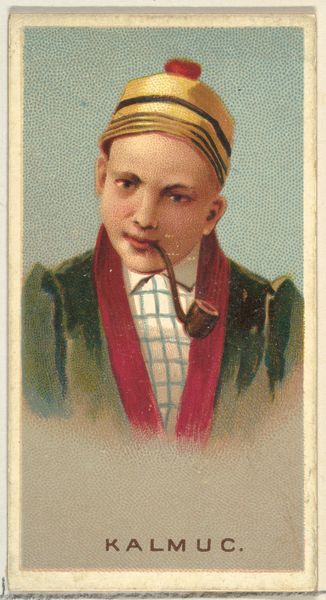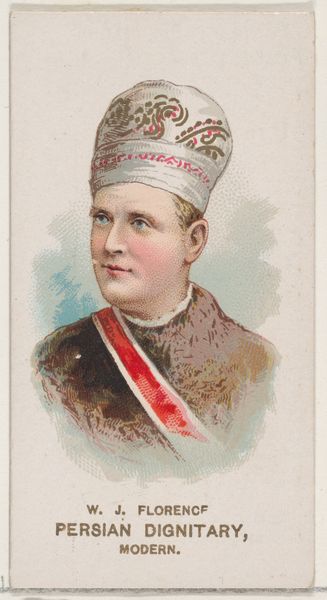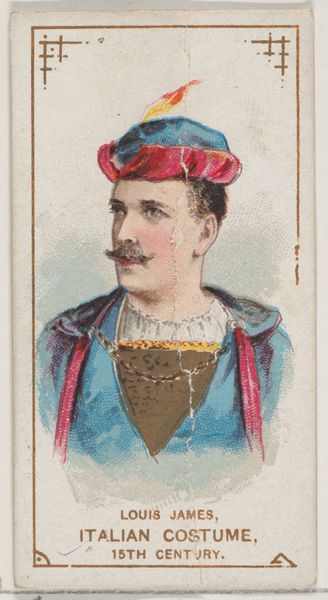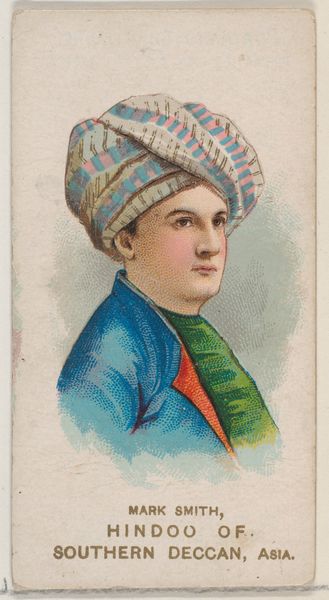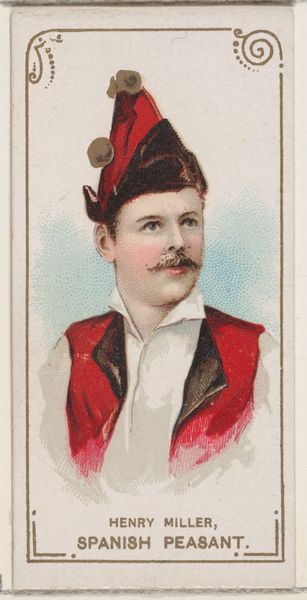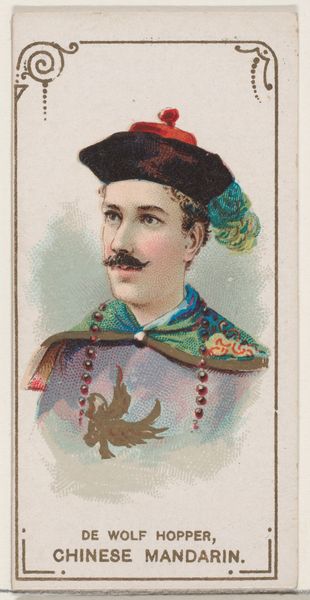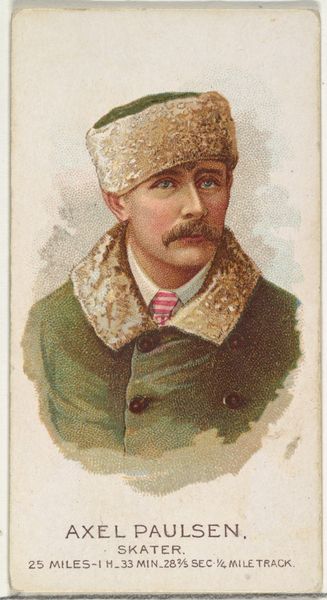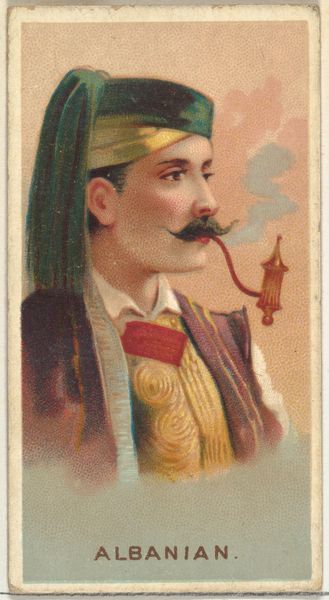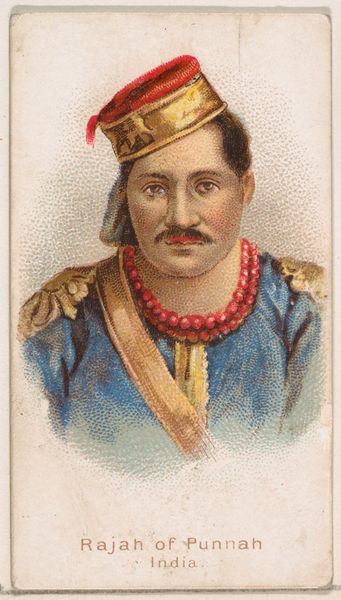
Mtesa, Emperor of Uganda, Africa, from the Savage and Semi-Barbarous Chiefs and Rulers series (N189) issued by Wm. S. Kimball & Co. 1888
0:00
0:00
drawing, tempera, lithograph, print
#
portrait
#
african-art
#
drawing
#
tempera
#
lithograph
# print
#
impressionism
#
orientalism
Dimensions: Sheet: 2 11/16 × 1 1/2 in. (6.8 × 3.8 cm)
Copyright: Public Domain
Curator: Welcome. Today, we are exploring a lithograph print and tempera work titled “Mtesa, Emperor of Uganda, Africa,” created in 1888 by Wm. S. Kimball & Co. This portrait, part of the Savage and Semi-Barbarous Chiefs and Rulers series, now resides at the Metropolitan Museum of Art. Editor: Gosh, he seems such a kind looking chap. I feel the softness of this image. It’s also quite delicate in its rendering. And his little hat, it sort of anchors everything! Curator: Indeed. The portrait presents a striking juxtaposition. While categorized within a series that denotes the subjects as 'savage,' the technical execution and compositional choices lean into a European fascination with orientalism and a near impressionistic softness of texture and gradient. Observe how the application of the tempera enhances the figure, whilst flattening the contours for ease of reproduction through the lithographic process. Editor: That’s interesting because I feel a strange blend of familiarity and...alienation. The bright colours draw you in, especially the reds and golds. It’s so opulent, almost staged—yet it's based on a real person and intended as an accurate portrayal. Curator: Correct. This tension between representation and reality is crucial. Kimball & Co. sought to capture and categorise global power figures for mass consumption. Semiotics suggests that the subject's attire and adornments serve as symbolic indicators of both status and, arguably, assumed "otherness" according to western preconceptions prevalent at the time. The lithographic print acts as a disseminator, reinforcing and potentially creating stereotypes about the Emperor and his domain. Editor: Makes you wonder about the actual relationship with the real Emperor Mtesa, doesn't it? Were they acquaintances? Strangers? Was he aware of the “Savage” label? I find a poignant distance in his eyes. Curator: An astute observation. As we analyze the print's interplay between subject, series and medium, the underlying complexities regarding cultural representation come to light. Editor: It speaks volumes on so many levels, from art history, the gaze of the time, to a personal introspection about perception. Curator: An effective summarization. The piece invites viewers to question the lens through which they view historical figures, while exploring how socio-cultural biases seep into visual representation.
Comments
No comments
Be the first to comment and join the conversation on the ultimate creative platform.
